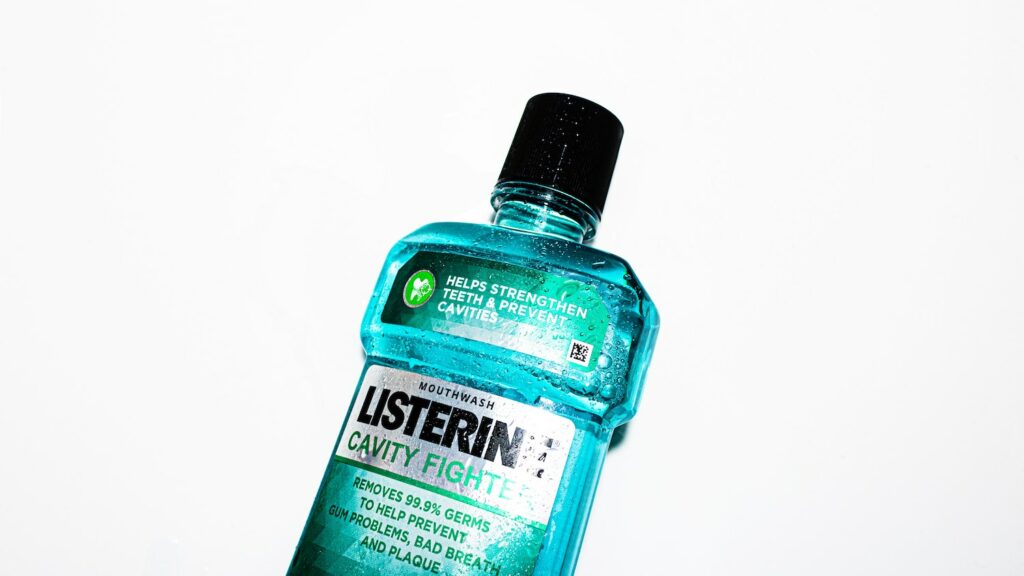In the 1930s, scientists examined the relationship between tooth decay in children and naturally occurring fluoride in drinking water. In 1945, the city of Grand Rapids, Michigan, was the first to add fluoride to its city water system to provide residents with its benefits.
Community water fluoridation has been identified as the most cost-effective method of delivering fluoride to all, reducing tooth decay by 25% in children and adults. Because of its contribution to the dramatic decline in tooth decay over the past 75 years, CDC named community water fluoridation as 1 of 10 great public health achievements of the 20th century. (source: https://www.cdc.gov/fluoridation/basics/index.htm)
Table of Contents
As we see, over 90 years of research has gone into providing fluoride across the masses, but it is still controversial in some parts. The community of Tyrone, where Denise and I lived for 36 years, had such a dispute. The Borough Council voted to remove fluoride from the town’s water supply. With dentists, pharmacists, and a chemistry professor with a PhD. all living in town, they chose to consult a funeral director! At the next meeting, a couple of dentists showed chart data from kids who lived in the borough versus the kids who drank well water. Fortunately, cooler heads prevailed, and the fluoride supplementation was reinstated.
The opposition always quotes the label from the bulk storage of sodium fluoride which says: Ingestion may cause vomiting, abdominal pain, diarrhea, convulsions, collapse, thirst, disturbed color vision, acute toxic nephritis.
SODIUM FLUORIDE reacts with acids to form corrosive and toxic hazard forms. [Handling Chemicals Safely 1980 p. 842]
In the words of Paracelsus: “Dosis sola facit venenum”, ‘only the dose makes the poison.’
Now that we have brushed our teeth for two minutes with an ADA-approved soft toothbrush and an ADA-approved pyrophosphate-free fluoride toothpaste, as well as cleaned our inter-dental spaces with appropriate ADA-approved dental floss, the question becomes can we get “kiss-ably close!” The final class of dentifrices we can recommend for getting more than a peck on the cheek is an ADA-approved mouthwash!
Halitosis
Let’s briefly discuss halitosis or bad breath. The major contributor to halitosis is the presence of volatile sulfur compounds. These compounds arise from the breakdown of foods, dental plaque, and the anaerobic bacteria associated with oral disease. High protein foods, such as eggs, meat, and fish, cause the highest concentration of volatile sulfur compounds when broken down by anaerobic bacteria towards the back of the mouth and throat. These bacteria can live in all the corners of the mouth, especially between teeth and in the “nooks and crannies” of the tongue.
Approximately 90% of the volatile sulfur compounds found in breath are:
- Hydrogen sulfide: paper-mill or rotten egg odor
- Methyl mercaptan: rotten cabbage odor
- Dimethyl sulfide: cabbage odor
Mouthwashes
There are two distinct mouthwashes:
- Cosmetic mouthwashes only freshen our breath and leave the mouth with a pleasant taste. They don’t deal with the causes of bad breath, kill the bacteria that cause bad breath, or help to reduce plaque, gingivitis, or cavities.
- Therapeutic mouthwashes c ontrol plaque and gingivitis. Some examples are chlorhexidine, povidone iodine, cetylpyridinium chloride (CPC) and essential oils. Using these mouthwashes significantly reduced plaque and bacterial indicators of gingivitis. A common counseling point is to rinse for at least 60 seconds, then spit out.
Ingredient(s):
- Cetylpyridinium chloride is an antiseptic that kills off the offending bacteria. CPC decreases dental plaque and gingivitis without the use of essential oils that cause “medicine breath.”
- Chlorhexidine (Peridex ®) is prescription only. It may cause teeth staining, but it can be easily removed by a dental hygienist.
- Fluoride strengthens teeth for added protection against tooth decay. Fluoride reduces demineralization by strengthening and protecting the enamel on teeth. The most common compound is Sodium Fluoride (NaF), and its typical over-the-counter concentration is 0.05%.
- Peroxides are typically used as bleaching agents. They help to whiten teeth and remove stains over time. The most common forms are hydrogen peroxide or carbamide peroxide. Products that contain 10% carbamide peroxide yield approximately 3.5 percent hydrogen peroxide. Common side effects of these products are dentin hypersensitivity and gum irritation. Hypersensitivity may be exacerbated by the dissolving away the mucus layer that protects teeth caused by the peroxides. Alcohol levels can be as high as 20%, so it is best practice to avoid use in patients with alcohol use disorder and adolescents due to potential abuse.
Note: For patients with xerostomia, or dry mouth, use:
- Sugar-free products
- Reduce tooth decay risk due to decreased salivary flow
- Alcohol-free dental rinses
- Decrease dryness caused by xerostomia and alcohol
- Biotene® or Oasis® mouth rinse
FLUORIDE
The American Dental Association, the American Academy of Pediatrics, the US Public Health Service, and the World Health Organization all support fluoridation of water. The risk of dental caries, or cavities, is reduced due to the uptake of fluoride by enamel crystallites and formation of fluorohydroxyapatite which is resistant to acid solubilization. Fluoride is anticariogenic because it replaces the hydroxyl ion in hydroxyapatite with the fluoride ion to form fluorapatite on the outer surface of the enamel. Fluorapatite hardens the enamel and makes it more acid resistant. Fluoride also has demonstrated antibacterial activity. Fluoride is most beneficial from birth to age 12 because unerupted permanent teeth are mineralizing at that time.
Fluoride supplementation a person receives depends on the concentration of the drinking water. Adding fluoride to the water reduces dental caries by 25%.
Sources:
- Drinking water: Approximately 73% of the US population lives in a municipality with a fluoridated water system. The United States Department of Health & Human Services recommends an optimal fluoride concentration of 0.7 milligrams/liter (mg/L). This concentration of fluoride in drinking water is the concentration that provides the best balance of protection from dental caries while limiting the risk of excess fluoride (dental fluorosis). www.cdc.gov/fluoridation/basics/index.htm Where I live in Blair County Pennsylvania, we have 30 different water systems. ONLY the Tyrone water system is fluoridated. The major municipalities in our county of Hollidaysburg and Altoona do not fluoridate their water supply. There was a controversy back in 2013 about eliminating fluoride, where the Borough Council voted to eliminate fluoride supplementation. After many meetings, and our local dentists bringing evidence they had accumulated comparing the Tyrone patients to the patients who didn’t have fluoridated water and the council reinstated the supplementation of fluoride to our water supply.
- Dentist applied : Fluoride-based varnishes and gels can be applied directly to the teeth during a dental visit.
- OTC mouthwashes: Avoid in children under the age of 6 years old, unless directed by a dentist, because they may swallow large amounts of the liquid inadvertently.
- Rx Gels and toothpastes: Deliver about four times as much fluoride as do the OTC products.
- Example: Prevident 5000® Does it work? The prevalence of dental caries in at least one permanent tooth (excluding wisdom teeth) decreased from 90% among those aged 12–17 years in the 1960s to 60% among those aged 12–19 years in 1999–2004. You can check your water supply, or the water supply where you practice at this website: https://nccd.cdc.gov/DOH_MWF/Default/Default.aspx
How to supplement patients whose water supply is not fluoridated:
| Water concentration of Fluoride | Age of Patient | Supplementation mg/day |
|---|---|---|
| >0.6 ppm of fluoride | 6 months - 3 years | 0mg |
| left blank | 3 years -16 years | 0mg |
| 0.3-0.6 ppm of fluoride | 6 months - 3 years | 0mg |
| left blank | 3 years - 6 years | 0.25 mg/day |
| left blank | 6 years - 16 years | 0.5mg/day |
| <0.3ppm of fluoride | 6 months - 3 years | 0.25mg/day |
| left blank | 3 years- 6 years | 0.5mg/day |
| left blank | 6 years - 16 years | 1.0mg/day |
Patient Care tips for Fluoride Supplements
- Fluoride supplements (oral) are prescription only.
- All tablet formulations MUST BE CHEWED OR CRUSHED ! It allows fluoride into the enamel of the teeth.
- Fluoride may be ingested from bottled water or juices that have been fluoridated.
- Avoid milk and other dairy products due to the potential for decreased absorption.
- Available as sodium fluoride (Luride®):
- Chewable tablets: 0.25 mg, 0.5 mg, and 1 mg ○
- Solution: 0.5 mg /mL.
- Sodium fluoride:
- 2.2 mg = 1 mg active fluoride ion
- 1.1mg = 0.5 mg active fluoride ion
- Most recommend fluoride be given at bedtime after kids brush their teeth.
Obviously, people should drink municipal water to get the benefits of fluoride! And that includes the astronomical rise in soda consumption… Have a great day on the bench!!
History of Fluoride - History of Mouthwash







